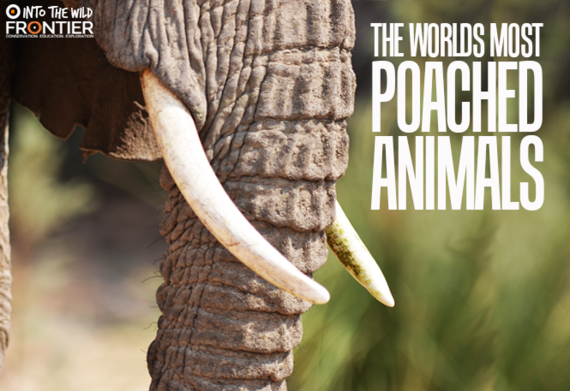
The poaching of endangered animals utterly dominates animal news worldwide. Not a day goes by when coverage isn't given to the plight of Rhinos, Elephants, Tigers and a whole army of other animals who are targeted for their value on the black market.
The list is far, far too long of which animals are poached, but which are the most poached?
Animals are singled out for a variety of reasons. In the case of elephants and rhinos, it's because of the magnificence of their horns and tusks. Big cats have wonderful pelts and furs that to some are aesthetically beautiful creations of nature while to others they are dollar signs. Many, like pangolins, are believed to have traditional medicinal benefits in countries like China and Vietnam despite, it must be said, little evidence to suggest they really are effective medicines, making the killing of them in droves mostly pointless.
Whatever the reason, poaching has become epidemic worldwide. So much so, that some creatures, like the West African Black Rhino, are believed to have been poached to extinction. Hopefully, this list of who's at the most risk will open some eyes and inspire some help.
Elephants -
Let's start off with the elephant in the room (pun most definitely intended). Poaching for ivory is the single biggest threat facing elephant populations, bigger than changing climate or expanding human territory. A single ivory tusk of medium size with no twists or notches can be worth hundreds of thousands of dollars. Some ivory collections have been known to fetch upwards of a million. Pound for pound, ivory is worth more than gold, silver, cocaine and oil. International trade in 'white gold' was made illegal in 1989 but that hasn't diminished demand. Desired for trophy reasons and for traditional medicine, ivory is in such demand that its estimated that every three years, 100,000 elephants are poached for their tusks and that one in ten elephants die from poaching. This killing has sometimes come in the form of local tribes using bows and arrows in traditional hunts, a practice that is still considered fair hunting and sustainable, as local people value the living elephant herds as much as the prize of a dead one, and rarely wipe out more than they need. However, more and more incidents are surfacing of gangs using AK 47 automatic rifles and even grenades on entire herds, only for the tusks that not every herd member would have to begin with. Elephant poaching is has grown rapidly, but is starting to slow down and be policed more fiercely. With the help of conservation groups, volunteers and local government and law enforcement, the Elephant might yet be saved from the brink of extinction.
Click here to learn more about the Frontier Namibia Desert Elephant Conservation Project.
Also, here's a link to a great story of the Kenya Ivory Burn, where local government has attempted to curb the rate of elephant poaching.
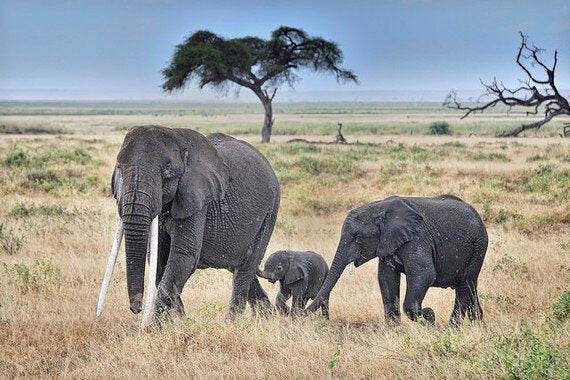
Pangolins -
Only just starting to become widely known as a problem, the poaching of the strange pangolin is nothing short of epidemic in South East Asia. Prized for their meat, medicinal purposes, their scales and to be kept as pets, pangolin numbers have plummeted in recent decades. Every year the number of pangolins poached and sold for parts is about ten times that of the rhino. As with the elephant, brutality in poaching extends to the pangolins too, as many are boiled alive to remove and soften their trade mark scales. In addition, pangolin foetus soup is a popular (albeit strange) delicacy in countries such as China and Vietnam, stemming the flow of reproduction and, again, brutally killing pregnant mothers. Given their size and natural solitary, its difficult to estimate how many pangolins are left in the wild. However, organisations such as the IUCN guess that at the current rate of poaching, pangolins could become extinct within 25 years. Momentum in conservation for the pangolin is picking up speed however, but the relative anonymity of the animal has prevented real trajectory for conservation. After all, you just don't see pangolins on the cover of National Geographic, or headlining with the WWF.
If you want to get involved with conservation with these amazing animals, check out the Frontier Vietnam Pangolin Rescue Project.
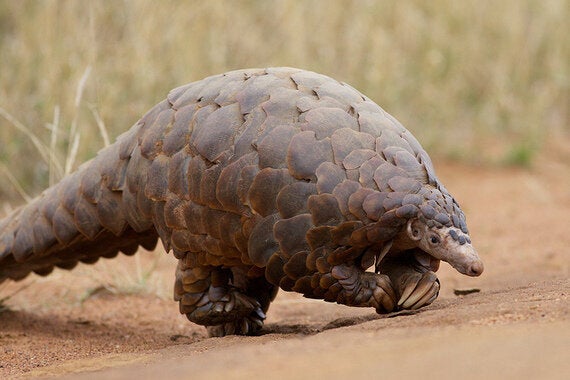
flickr | David Brossard
Rhino -
Along with the elephant, rhinos are surely the poster child for international illegal poaching. So bad has their plight become, that a subspecies is even believed to have been poached to extinction in 2011. The West African Black Rhino was so highly prized by hunters that their population fell by 96% during the 30 year period leading up to their final extinction in 2011. They were killed in their thousands and all for one reason and one reason only: Their Horn. Made of keratin, the same stuff that human fingernails are made from, rhino horns were a target of trophy hunters and traditional medicine-ers alike. Yet again, Vietnam and China are the world leaders in illegal rhino horn trade for these reasons. Today, other species of rhino still face the same threat for the same reasons. So bad has the situation become, that 24/7 armed guards have been allocated to baby rhino and nursing mothers in the past to protect them from any harm. It really says a lot doesn't it, when we have to place an around the clock guard around a baby to stop people from attacking it. Again we seem to think of brutal ways to hunt this animal, as in many cases rhino have been tranquilized and their horns forcibly removed while the animal is still alive, leaving it to bleed out. The best hope for the rhino population has been the strict watch over game reserves in central and southern Africa. Here, where rhino are naturally most common, portions of land are carefully marked and guarded so that the rhino have a safe haven. It doesn't stop all poachers, but it has proven to be the only way to somewhat protect them.
To help protect vulnerable rhinos, check out the Frontier South Africa Wildlife Conservation Volunteer Project.
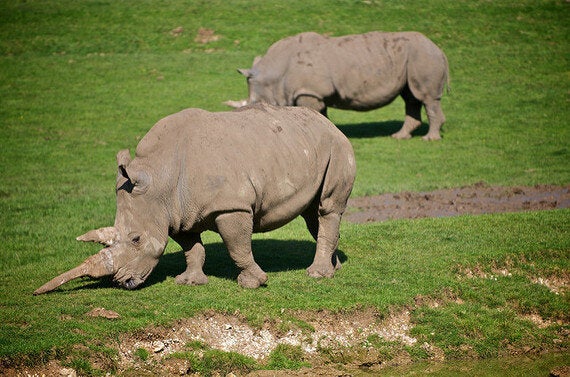
Tigers -
Tigers have been poached for longer than perhaps any other animal. Records of tiger hunts go back thousands of years in South East Asia and this assault has barely relented. One of the main targets for Chinese traditional medicine, demand for tiger body parts extends to their nose leather, eyeballs, tails, bile, whiskers, penis, fat, eggs, teeth, ears and tongue. All of which are believed to enhance you in some way or, indeed, cure you of something. Little to no evidence exists of most of this traditional medicine, but as the demand has increased, so has the number of tigers poached. That is all without mentioning that prize of all prizes for a trophy hunter; a Tiger pelt. Just recently the number of per year tigers that were being killed fell however, so progress is being made with saving these magnificent big cats. Estimations put the total number of wild tigers left at around 3,000 and while that number is pretty miniscule, their numbers are growing. Unfortunately, the funds and infrastructure simply don't exist in much of the tiger's native land for large scale conservation efforts to take place and much of the renewal in their fortunes has been a by-product of other things. For instance, changes in human urban development, meaning that tiger habitats have been left untouched in areas or indeed allowed the chance to rekindle. Some positivity must be taken from their growing populations however, that is at least something.
Join the Frontier Malaysia Tiger Conservation Project to help protect these endangered big cats.
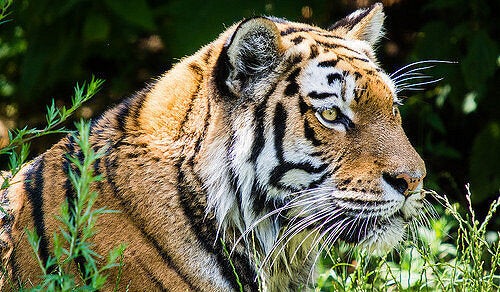
Poaching across the world is epidemic in today's world. Whether we're talking about elephants, shark finning, whaling or even the by catch of fishing, it's something that threatens our natural world just as much as climate change and our expanding society. With this issue the answer is difficult, much of the cause of poaching comes from demand for traditional practices, and who are we to say that people can't have traditions? We nearly caused the whale to become extinct 150 years ago through over eagerness, now the same is happening with these four magnificent animals.
By Guy Bezant - Online Journalism Intern
Frontier runs conservation, development, teaching and adventure travel projects in over 50 countries worldwide - so join us and explore the world!
See more from our volunteers #Frontiervolunteer
